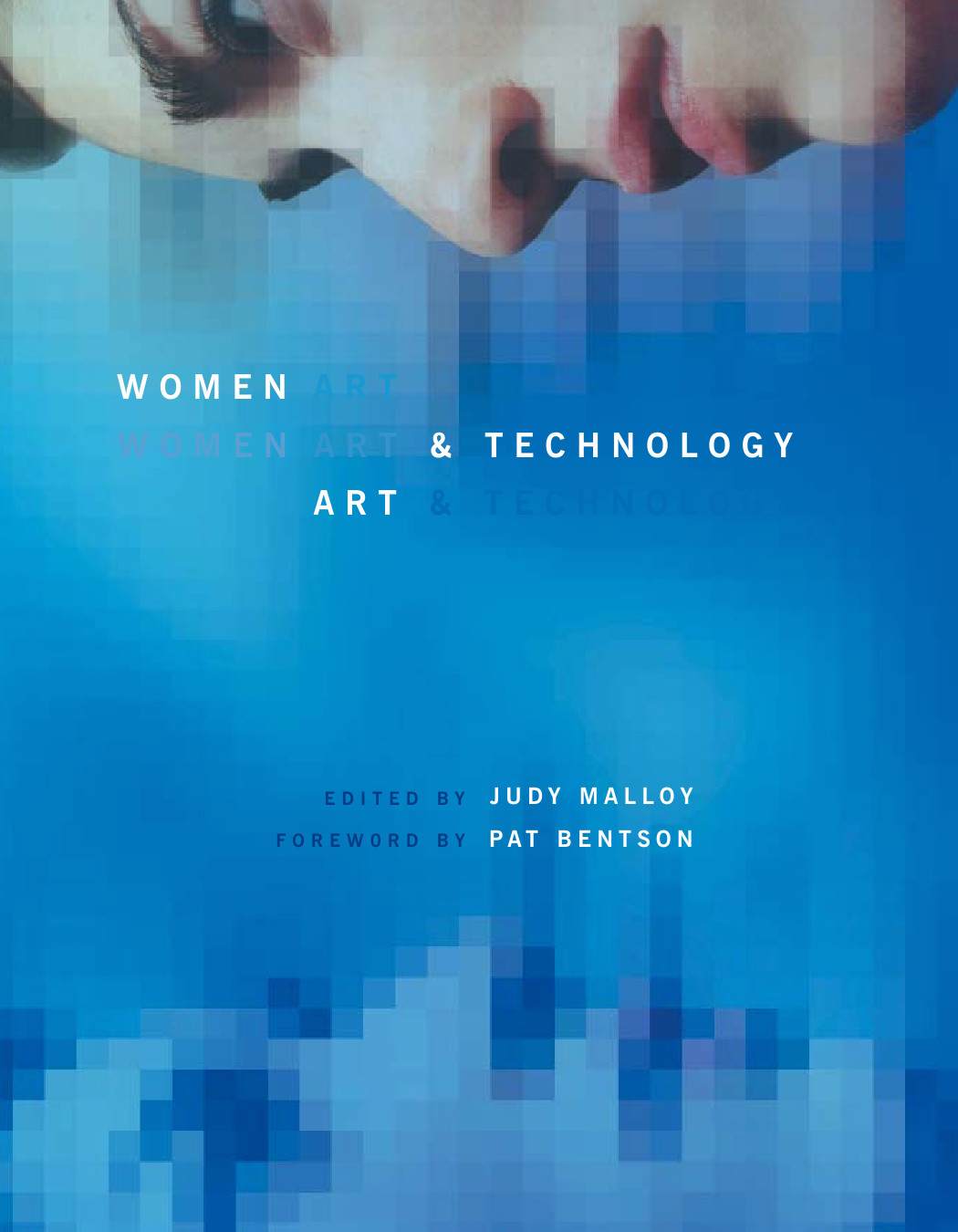Judy Malloy (ed.): Women, Art, and Technology (2003)
Filed under book | Tags: · collaborative art, computer graphics, electronic art, gender, installation art, interactivity, mass media, media, media art, net art, performance, performance art, technology, video art, women

“Although women have been at the forefront of art and technology creation, no source has adequately documented their core contributions to the field. Women, Art, and Technology, which originated in a Leonardo journal project of the same name, is a compendium of the work of women artists who have played a central role in the development of new media practice. The book includes overviews of the history and foundations of the field by, among others, artists Sheila Pinkel and Kathy Brew; classic papers by women working in art and technology; papers written expressly for this book by women whose work is currently shaping and reshaping the field; and a series of critical essays that look to the future.
Artist contributors include computer graphics artists Rebecca Allen and Donna Cox; video artists Dara Birnbaum, Joan Jonas, Valerie Soe, and Steina Vasulka; composers Cecile Le Prado, Pauline Oliveros, and Pamela Z; interactive artists Jennifer Hall and Blyth Hazen, Agnes Hegedus, Lynn Hershman, and Sonya Rapoport; virtual reality artists Char Davies and Brenda Laurel; net artists Anna Couey, Monika Fleischmann and Wolfgang Strauss, Nancy Paterson, and Sandy Stone; and choreographer Dawn Stoppiello. Critics include Margaret Morse, Jaishree Odin, Patric Prince, and Zoe Sofia.”
Foreword by Pat Bentson
Publisher MIT Press, 2003
ISBN 0262134241, 9780262134248
541 pages
PDF (6 MB, updated on 2020-4-23)
Comment (0)Lisa Nakamura: Digitizing Race: Visual Cultures of the Internet (2007)
Filed under book | Tags: · ethnicity, gender, identity, internet, race, racial politics, virtual communities, visual culture

In the nineties, neoliberalism simultaneously provided the context for the Internet’s rapid uptake in the United States and discouraged public conversations about racial politics. At the same time many scholars lauded the widespread use of text-driven interfaces as a solution to the problem of racial intolerance. Today’s online world is witnessing text-driven interfaces such as e-mail and instant messaging giving way to far more visually intensive and commercially driven media forms that not only reveal but showcase people’s racial, ethnic, and gender identity.
Lisa Nakamura, a leading scholar in the examination of race in digital media, uses case studies of popular yet rarely examined uses of the Internet such as pregnancy Web sites, instant messaging, and online petitions and quizzes to look at the emergence of race-, ethnic-, and gender-identified visual cultures.
While popular media such as Hollywood cinema continue to depict nonwhite nonmales as passive audiences or consumers of digital media rather than as producers, Nakamura argues the contrary—with examples ranging from Jennifer Lopez music videos; films including the Matrix trilogy, Gattaca, and Minority Report; and online joke sites—that users of color and women use the Internet to vigorously articulate their own types of virtual community, avatar bodies, and racial politics.
Publisher U of Minnesota Press, 2007
ISBN 0816646139, 9780816646135
248 pages
Keywords and phrases
Asian American, visual culture, avatars, Internet, digital signatures, buddy icons, Minority Report, racial formation, African Americans, codetalkers, cyberpunk, Matrix trilogy, Details magazine, Jennifer Lopez, digital divide, posthuman, racial project, racism, However, Agent Smith
More info (publisher)
More info (google books)

